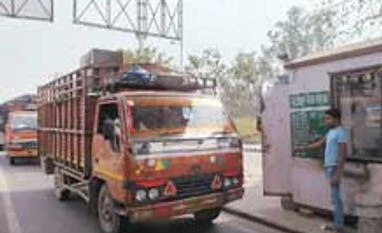The Budget has laid down a clear road map for promoting infrastructure development and investment in manufacturing, and in the process has shown a welcome inclination to improve the ease with which business is done in India. However, the Budget does not sufficiently address the greatly enhanced power requirement that the Make in India campaign would require, says a KPMG analysis
EASE OF DOING BUSINESS IN INDIA
EASE OF DOING BUSINESS IN INDIA
- Proposes to set up exclusive commercial divisions in various courts in India to resolve commercial disputes. Also provides for rationalisation of penalty provisions in customs, central excise and service tax to encourage compliance, and early dispute resolution will help improve the contract enforcement ranking in World Bank rankings
- GAAR shelved for two years and will be prospectively applied when it is implemented
- Proposes draft legislation that will replace multiple prior permissions with a single regulatory mechanism
- Number of initiatives for indirect taxation:
* Assurance to reduce corporate tax rate from 30 per cent to 25 per cent in four years and abolition of wealth tax promises a competitive tax regime
* Rationalisation of MAT provisions exempting FIIs on capital gains from specified securities
- Surcharge of 2 per cent for domestic companies militates against ease of doing business
- Poor logistics infrastructure is one of the biggest barriers for Make In India. The investments in road and rail infrastructure will improve supply chain speed and efficiency, and strengthen the Make in India campaign
- Thrust on housing is positive for related manufacturing sectors such as steel and cement that have been struggling for the last few years
- Access to funds through MUDRA bank/ TReDS will be a big relief for MSMEs. Allowing foreign investment and tax pass through in alternate investment funds will improve investments in manufacturing sector
- Reaffirming GST implementation from 1 April 2016 and deferring GAAR by two years will have a positive impact
- Addressing the inverted duty structure will make manufacturing in India more attractive
- While five new UMPPs and enhanced target for renewable energy capacity have been announced, this may not be sufficient to address the require-ments of the manufacturing sector
- Significant infrastructure rollout commitments, including 1 lakh km of road, irrigation infrastructure, housing for all and national fibre optic rollout
- Rs 70,000 crore for infrastructure. Further funding of Rs 40,000 crore infrastructure through existing using Rs 4 of excise duty on petrol and diesel
- Rationalises the capital gains regime for the sponsors exiting at the time of listing of units of Real Estate Investment Trusts (REITs) and Infrastructure Investments Trusts (InvITs), subject to payment of Securities Transaction Tax (STT). Tax pass through also for rental income of REITs from their own assets
- Tax pass through proposed for alternative investment funds for infrastructure, so that funds per se are not taxed
- Certain parts and components used in manufacture of wind-operated electricity generators and solar photovoltaic cells exempted from excise duty as a rationalisation step since final product is exempt from duty
- Commitment to introduce GST by April 2016 reiterated
- Service tax rate enhanced from 12 per cent to 14 per cent to ensure seamless transition to GST regime (where services are likely to attract higher tax rate)
- Service tax exemptions/negative list pruned in light of proposed GST structure (that envisages minimal exemptions)
- Impact areas include certain entertainment events, amusement facilities, services provided by government to business entity, port/ airport construction, etc.
- Indirect tax structure simplified by subsuming education cesses
- More movement from indirect subsidies to direct subsidies and DBT will be extended from 10 million people to 100.3 million people
- Jan Dhan-Aadhaar-Mobile (JAM) boost to financial sector and banking, and potentially extends the reach of e-commerce to rural areas
- First time that toilets have been mentioned in the Budget. Target of building 60 million toilets
- 100 per cent deduction under Section 80G of the Income Tax Act for donations made to Swachh Bharat Kosh (by both resident and non-resident Indians) and Clean Ganga Fund (by residents), excluding CSR contributions made under Section 135 of the Companies Act, 2013
- Extension by one year of concessions from customs and excise duties on specific parts for manufacture of electrical and hybrid vehicles
- Service tax exemption for common effluent treatment plants
- Funding through increase in the clean energy cess from Rs 100 to Rs 200 per metric tonne of coal to finance clean environment initiatives. Increase in excise duty from 12 per cent to 15 per cent on bags of polymers of ethylene, other than for industrial use. Proposed provision to levy Swachh Bharat cess of 2 per cent or less on services
- Providing reimbursements to states that roll out national optic-fibre network to 2.5 lakh villages
- No articulation of budgetary support for the vision of Digital India
- Special additional duty on import of goods used in manufacture of certain IT products exempted. Basic customs duty on certain inputs for manufacture of telecommunication grade optical fibre cables exempted
- Considerable use of IT for improving ease of doing business, providing direct benefits to citizens, providing scholarships and in many other aspects of governance
- Significant omission in the Budget in terms of no mention of smart cities that would form an important part of the Digital India vision. India needs an allocation of Rs 50,000 crore for smart cities to make the vision more credible
- Customs duty exempted on parts, component and accessories for use in manufacture of tablet computers
)